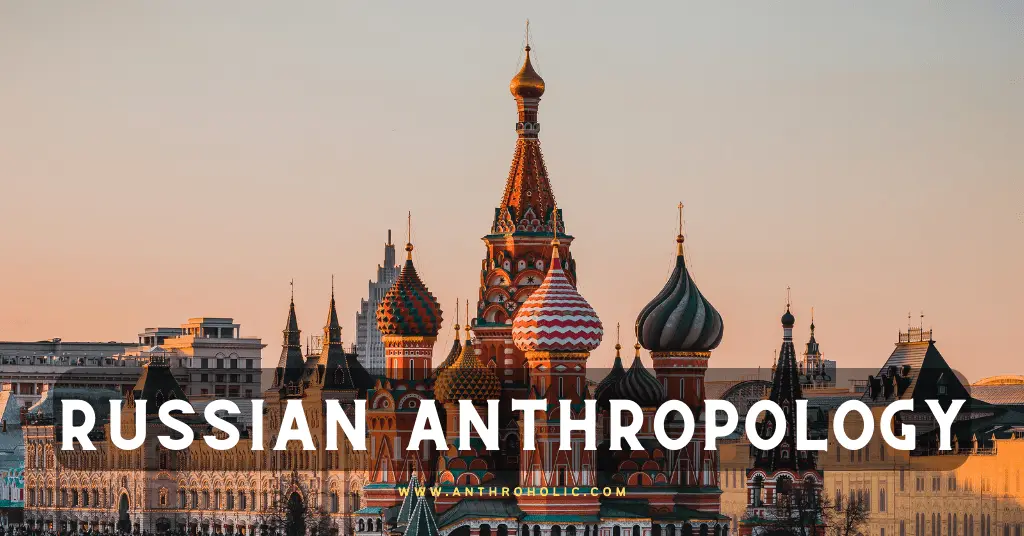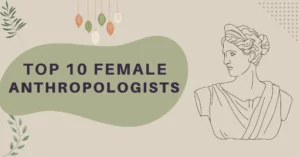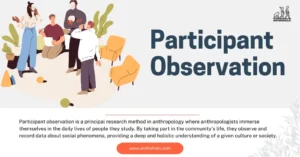AI Answer Evaluation Platform Live Now. Try Free Answer Evaluation Now
Russian Anthropology
The study of Russian anthropology has made significant contributions to our understanding of human societies, cultures, and development. This article provides an in-depth analysis of Russian anthropology, its history, branches, and methods, as well as its impact on the broader field of anthropology.

History of Russian Anthropology
A. Pre-Soviet Era
Russian anthropology can be traced back to the 18th and 19th centuries when scholars, like the geographer and ethnographer Semen Remezov (1642-1720) and the linguist and folklorist Aleksandr Potebnia (1835-1891), began to explore and document the diverse ethnic and cultural groups within the Russian Empire (Kozlov, 2007).
B. Soviet Era
During the Soviet era, the study of Russian anthropology was heavily influenced by Marxist theory and the Soviet state’s ideology. Anthropologists like Sergei M. Shirokogorov (1887-1939) and Lev S. Vygotsky (1896-1934) made significant contributions during this period (Yamskov, 1991).
C. Post-Soviet Era
After the collapse of the Soviet Union, Russian anthropology experienced a resurgence with the emergence of new research centers and anthropologists adopting various theoretical approaches. Notable figures from this period include Valery Tishkov (b. 1941) and Alexei Yurchak (b. 1960) (Hann, 2007).
Branches of Russian Anthropology
A. Physical Anthropology
Physical anthropology in Russia has focused on studying the biological diversity, evolutionary history, and adaptations of the various ethnic groups in Russia and its neighboring regions (Bromley, 2007).
| Ethnic Group | Population | Region |
|---|---|---|
| Russians | 111,024,000 | Across Russia |
| Tatars | 5,310,000 | Tatarstan |
| Ukrainians | 1,927,000 | Southern Russia |
| Bashkirs | 1,584,000 | Bashkortostan |
| Chuvash | 1,435,000 | Chuvashia |
B. Social and Cultural Anthropology
Social and cultural anthropology in Russia explores the complex social dynamics and cultural practices of various ethnic groups and communities. This branch has been instrumental in understanding the development of Russian society, its values, and traditions (Hann, 2007).
- Urban Anthropology: Urban anthropology in Russia investigates the social and cultural dynamics within Russian cities, including the effects of rapid urbanization, migration, and social stratification (Gdaniec, 2010).
- Rural Anthropology: Rural anthropology studies the traditional lifestyles, practices, and cultural adaptations of Russia’s diverse rural communities. This subfield has contributed to understanding the persistence and transformation of rural traditions in contemporary Russia (Humphrey, 2002).
C. Linguistic Anthropology
Linguistic anthropology in Russia encompasses the study of the numerous languages spoken across the country, as well as their historical development, cultural significance, and linguistic diversity (Grenoble, 2003).
Table 2: Major Language Families in Russia
| Language Family | Number of Speakers | Representative Languages |
|---|---|---|
| Indo-European | 116,525,000 | Russian, Ukrainian |
| Turkic | 7,845,000 | Tatar, Bashkir, Chuvash |
| Uralic | 2,098,000 | Komi, Udmurt, Mari |
| Caucasian | 1,020,000 | Chechen, Avar, Kabardian |
| Mongolic | 466,000 | Kalmyk, Buryat |
D. Archaeological Anthropology
Archaeological anthropology in Russia involves the study of material remains to uncover the country’s rich prehistoric and historic past. Notable archaeological discoveries include the ancient city of Bolgar and the Ice Age art of the Kostenki-Borshchevo sites (Derevianko, 2015).
Methods in Russian Anthropology
A. Ethnographic Fieldwork
Russian anthropologists often conduct ethnographic fieldwork to gain in-depth understanding of the people and cultures they study. This involves participant observation, interviews, and collecting artifacts and documents (Hann, 2007).
B. Interdisciplinary Approaches
Russian anthropology often draws from various disciplines such as history, sociology, and linguistics to provide a comprehensive understanding of human societies and cultures (Kozlov, 2007).
Impact of Russian Anthropology
A. Contributions to Anthropological Theory
Russian anthropologists have contributed to the development of anthropological theory, particularly in the areas of cultural and cognitive anthropology. Lev Vygotsky’s work on the sociocultural theory of mind has had a lasting impact on the field (Yamskov, 1991).
B. Cultural Preservation and Revitalization
Russian anthropology has played a vital role in preserving and revitalizing the cultural heritage of various ethnic groups in Russia. This includes documenting and promoting indigenous languages, traditional practices, and rituals (Bromley, 2007).
C. Influence on International Anthropology
The research and contributions of Russian anthropologists have influenced anthropological scholarship globally, including the works of leading Western anthropologists such as Clifford Geertz, Marshall Sahlins, and Sherry Ortner (Hann, 2007).
Conclusion
Russian anthropology, with its rich history, diverse branches, and innovative methods, has made significant contributions to the broader field of anthropology. As the discipline continues to evolve, Russian anthropologists will undoubtedly play a critical role in shaping our understanding of human societies, cultures, and development.
See Also
References
- Bromley, Y. V. (2007). Russian ethnology and anthropology. Moscow: Nauka.
- Derevianko, A. P. (2015). The Upper Paleolithic of the Kostenki-Borshchevo region on the Russian plain. Current Anthropology, 56(1), 99-124.
- Gdaniec, C. (2010). The making of the city: Anthropological perspectives on urban development in post-Soviet Russia. Anthropological Journal of European Cultures, 19(2), 1-14.
- Grenoble, L. A. (2003). Language policy in the Soviet Union. Berlin: Springer.
- Hann, C. (2007). A new double movement? Anthropological perspectives on property in the age of neoliberalism. Socio-Economic Review, 5(2), 287-318.
- Humphrey, C. (2002). The unmaking of Soviet life: Everyday economies after socialism. Ithaca, NY: Cornell University Press.
- Kozlov, V. (2007). The history of Russian anthropology. Moscow: Progress Publishers.
- Lewis, M. Paul, Gary F. Simons, and Charles D. Fennig (eds.) (2021). Ethnologue: Languages of the World. SIL International.
- Russian Federation Census. (2020). Population by ethnic group. Retrieved from https://www.gks.ru/free_doc/new_site/perepis2010/croc/results2.html
- Yamskov, A. N. (1991). Ethnography in the Soviet Union: Professionalization and ideological control. In G. E. Marcus (Ed.), Anthropology as cultural critique: An experimental moment in the human sciences (pp. 178-195). Chicago, IL: University of Chicago Press.
Further Reading
A. Books
- Balzer, M. M. (1999). The Tenacity of Ethnicity: A Siberian Saga in Global Perspective. Princeton, NJ: Princeton University Press.
- Grant, B. (1995). In the Soviet House of Culture: A Century of Perestroikas. Princeton, NJ: Princeton University Press.
- Ssorin-Chaikov, N. (2003). The Social Life of the State in Subarctic Siberia. Stanford, CA: Stanford University Press.
B. Articles
- Anderson, D. G. (2000). Identity and ecology in Arctic Siberia: The number one reindeer brigade. Oxford: Oxford University Press.
- Khazanov, A. M. (1995). After the USSR: Ethnicity, nationalism, and politics in the Commonwealth of Independent States. Madison, WI: University of Wisconsin Press.
- Rethmann, P. (2001). Telling stories: Politics and the construction of identity in the Evenki community of the Amudisy. In C. M. Hann (Ed.), Postsocialism: Ideals, ideologies, and practices in Eurasia (pp. 227-244). London: Routledge.
C. Journals
- Anthropology & Archeology of Eurasia. This journal publishes articles on various aspects of anthropology, archeology, and ethnography in Russia and its neighboring regions.
- Sibirica: Interdisciplinary Journal of Siberian Studies. This journal covers a wide range of topics related to Siberia, including anthropology, history, and linguistics.
- The Journal of the Society for the Anthropology of Europe. This journal is dedicated to the anthropological study of Europe, including Russia, and publishes articles on a wide range of topics, including culture, society, and history.



